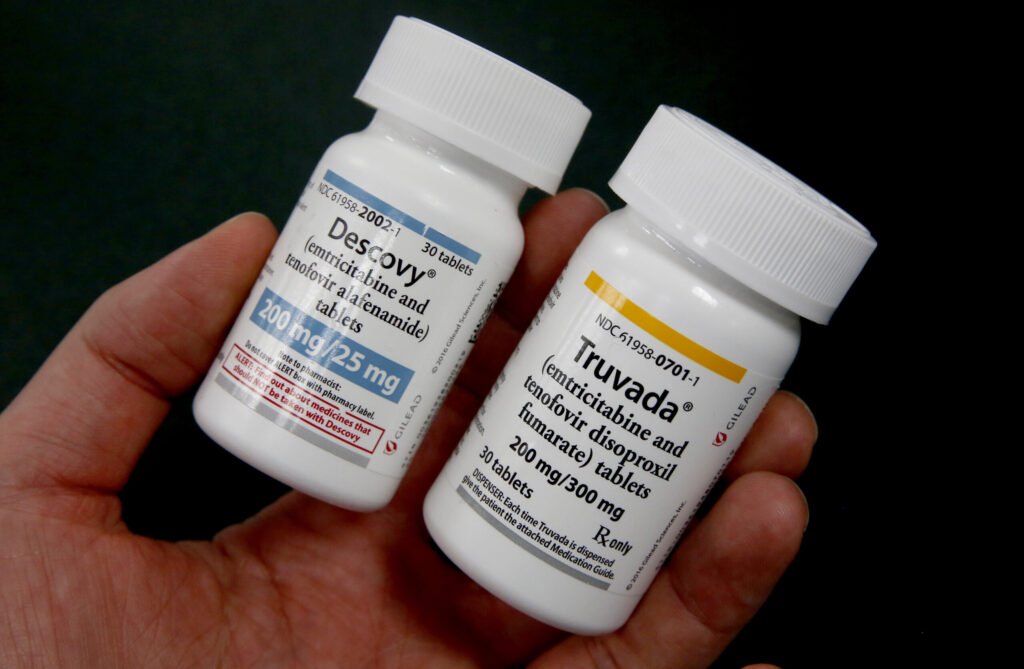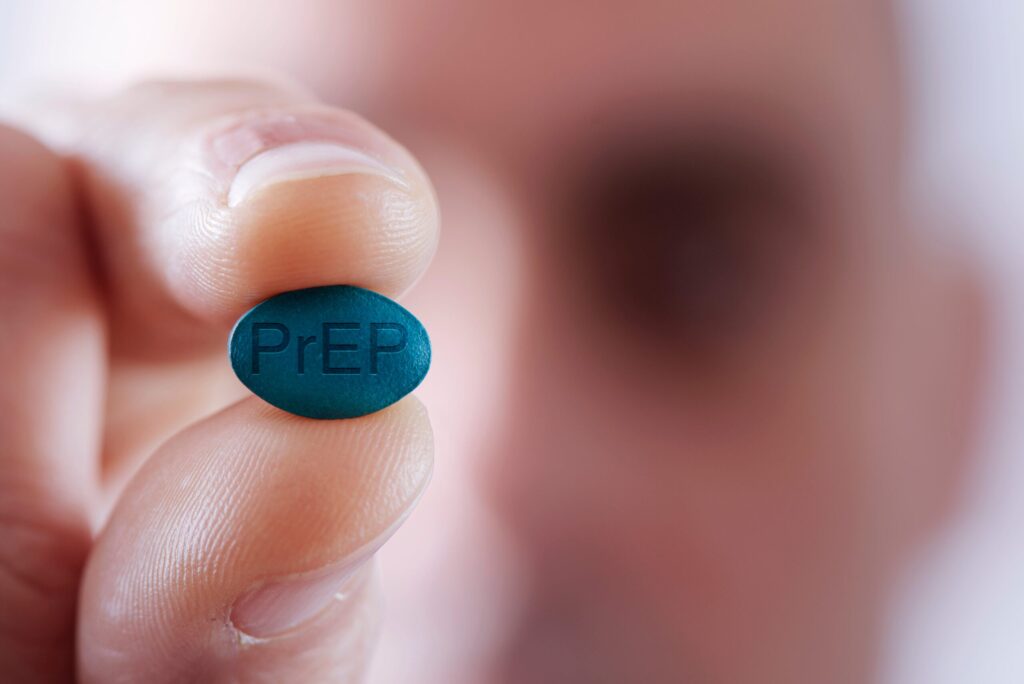How Long Do PrEP Medicines Stay in the Body? Does It Determine Its Effectiveness?

In the relentless battle against HIV, a beacon of hope and progress emerges—Pre-Exposure Prophylaxis (PrEP). This pioneering approach redefines the landscape of HIV prevention, offering a proactive shield against the virus for those facing elevated risk.
PrEP operates on a brilliantly simple premise: arming at-risk individuals with the might of antiretroviral medications. Truvada and Descovy, vital players in this defense, epitomize modern medicine’s promise, designed meticulously to halt HIV transmission.
By seamlessly weaving these medications into daily life, individuals become architects of their protection, outwitting the virus at its core. This strategy not only reshapes HIV prevention but ushers in an era of empowerment and control, shattering the inevitability of vulnerability.
PrEP carves a tangible path to dodge infection, where each dose contributes to a collective armor against the virus, envisaging a future with fewer new infections and a more vigorous HIV defense.
The Half-life of PrEP Medications: How Long Do They Stay in the Body?

In this intricate dance of prevention, Truvada and Descovy step onto the stage as primary players. Armed with distinctive elements—tenofovir disoproxil fumarate (TDF) and tenofovir alafenamide (TAF), respectively—their duration of effectiveness is closely tied to their half-lives.
Truvada boasts a brisk half-life of approximately 17 hours, while Descovy extends its influence for around 25 hours. This temporal half-life symbolizes the duration for half of the medication to metamorphose and exit the body.
Like a heartbeat, these kinetics mold the recommended dosing rhythm, which is essential to sustain efficacy in thwarting HIV transmission.
The Effective Duration of PrEP: Sustaining Protection Against HIV
Defining the effective duration of PrEP hinges on maintaining a steadfast shield against HIV transmission. For those embracing a daily PrEP regimen, the consistent presence of antiretroviral medications forms an unyielding bulwark against the virus.
This uninterrupted protection is a solace for those exposing themselves to the risks of HIV, such as unprotected intercourse or needle-sharing. By embracing the ritual of daily dosing, individuals minimize their susceptibility to HIV, simultaneously contributing to the global mission of curbing virus dissemination.
An alternate facet of PrEP’s enduring efficacy is anchored in flexible dosing strategies. Event-driven dosing, chosen by some, hinges on adherence to a precise schedule surrounding high-risk activities. While this approach permits flexibility, dedication to timing and dosage remains the cornerstone for ensuring the medication’s prowess.
Understanding the Factors Influencing PrEP Absorption and Elimination from the Body

Though PrEP’s effective duration is intricately woven into medication half-lives, myriad factors impact the absorption and elimination of these agents. Metabolic variations, a unique hallmark of individuals, determine how long the medication remains effective.
Dietary choices exert influence, too—some foods elevate absorption, while others may hinder it. Vigilance regarding intake timings can foster optimal drug levels. Certain substances or medications also interact with PrEP agents, influencing their absorption and effectiveness.
Expert consultation on potential interactions is indispensable to uphold PrEP’s resilience. Kidney function, a pivotal actor, directs medication elimination. Given their renal excretion, individuals with impaired kidney function may witness altered drug clearance rates, warranting a recalibration of effectiveness and duration.
Monitoring and Testing for PrEP Efficacy
The quest for optimal PrEP efficacy hinges on meticulous monitoring and testing. Scheduled HIV tests during PrEP validate an individual’s HIV-negative status, affirming the effectiveness of their chosen regimen.
Adherence to the prescribed dosing regimen is a non-negotiable tenet for PrEP’s triumph.
Individuals can stay resolute in their medication journey by leveraging various tools, including electronic reminders, pill counts, and self-reported diaries. Regular consultations with healthcare experts offer a platform to address concerns, evaluate side effects, and fine-tune dosing strategies if necessary.
These engagements cultivate a holistic PrEP approach, where the method aligns with health goals and lifestyle choices.
Adjusting Dosage and Frequency: Personalizing PrEP Treatment

With the advancement in medical science, personalized medicine, which takes into account individual variability in genes, environment, and lifestyle, is becoming more common. This approach can be applied to PrEP (Pre-exposure prophylaxis) as well.
The standard dosage recommendation may not suit every individual due to genetic differences, metabolism rates, and other factors. For instance, people with certain liver or kidney conditions might metabolize drugs differently.
Therefore, doctors sometimes adjust the dosage or frequency of PrEP intake to ensure optimal protection against HIV.
Regular consultations and monitoring, along with understanding the patient’s medical history and current health condition, are essential. It’s crucial for patients to communicate any side effects or changes they observe, as these could be indications that the dosage needs to be reevaluated.
The Evolution of PrEP Medications: A Look into the Future

As HIV research progresses, there’s constant evolution in the available PrEP medications and methods of administration. Originally, daily oral tablets were the primary method.
However, there’s ongoing research into long-acting injectables, topical gels, and even implants that could provide extended protection against HIV. The aim is to improve adherence to treatment, minimize potential side effects, and offer more choices to those at risk of HIV infection.
These innovations might change how long the medication stays in the body and its effective duration. Understanding the newest offerings and how they differ from traditional pills is essential for both healthcare providers and those considering PrEP.
As we move forward, the hope is to have a broader array of effective, long-lasting, and user-friendly PrEP options to cater to diverse needs.
Final Words
Navigating the expanse of PrEP duration is empowerment of knowledge. Grasping the nuanced interplay between medication half-lives and factors influencing effectiveness equips individuals to forge prudent decisions in their HIV prevention voyage.
Whether daily dosing or unconventional methodologies, one truth persists: guarding against HIV mandates commitment and vigilance. Adhering to prescribed regimens, punctuating them with monitoring and testing, and seeking guidance from healthcare professionals, ushers forth PrEP’s unwavering efficacy.
This commitment champions personal health and fuels the collective endeavor of quelling new HIV infections and ultimately conquering the HIV epidemic.
In a landscape where knowledge is the fulcrum of prevention, tele-PrEP providers enable individuals to command the tools to help their sexual health journey, shaping a horizon free from the shadow of HIV.
This odyssey towards effective PrEP utilization is painted with informed decisions and a collective dedication to a healthier world.
Read more about common sexually transmitted diseases, protect, and safeguard your health while it is not too late.




